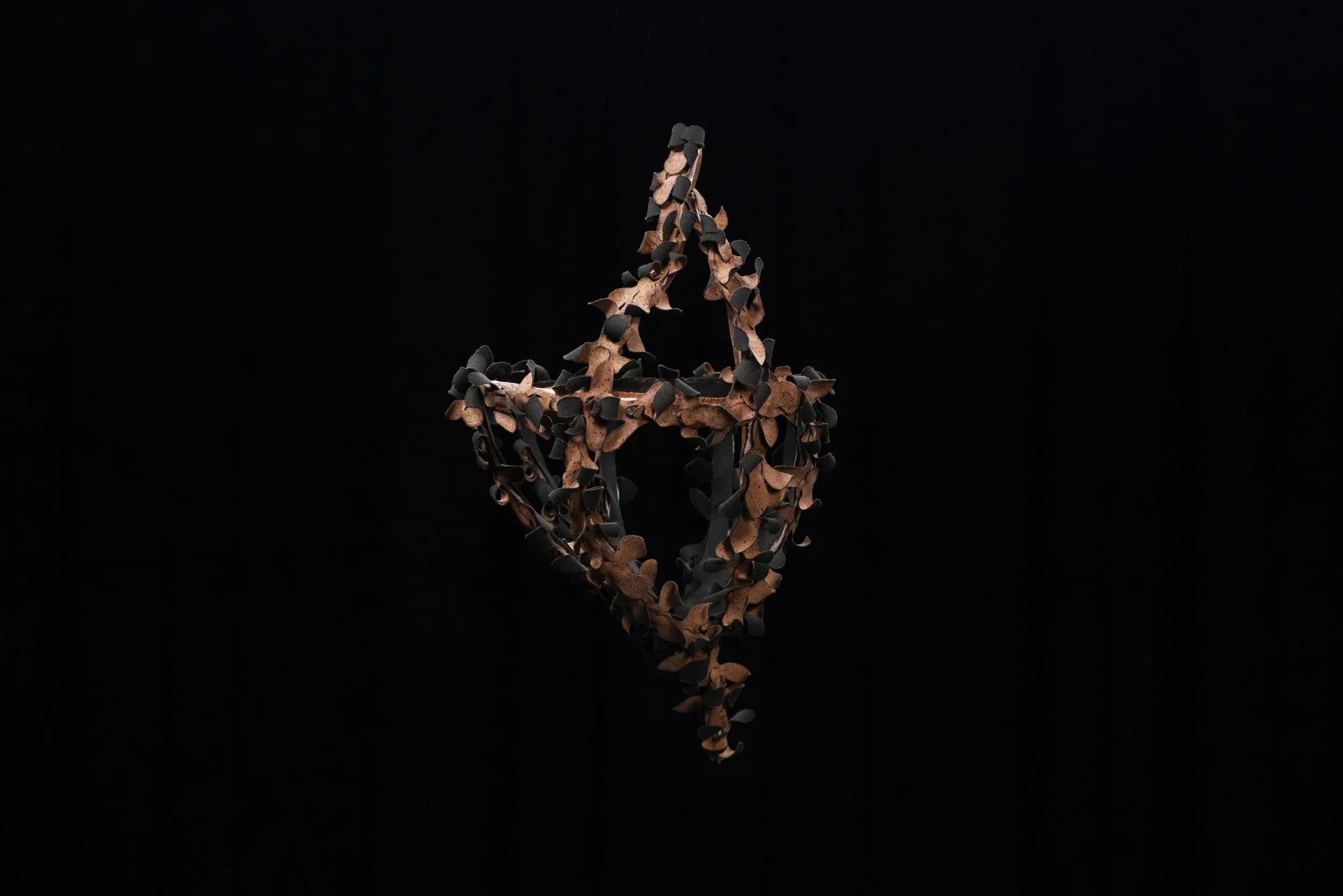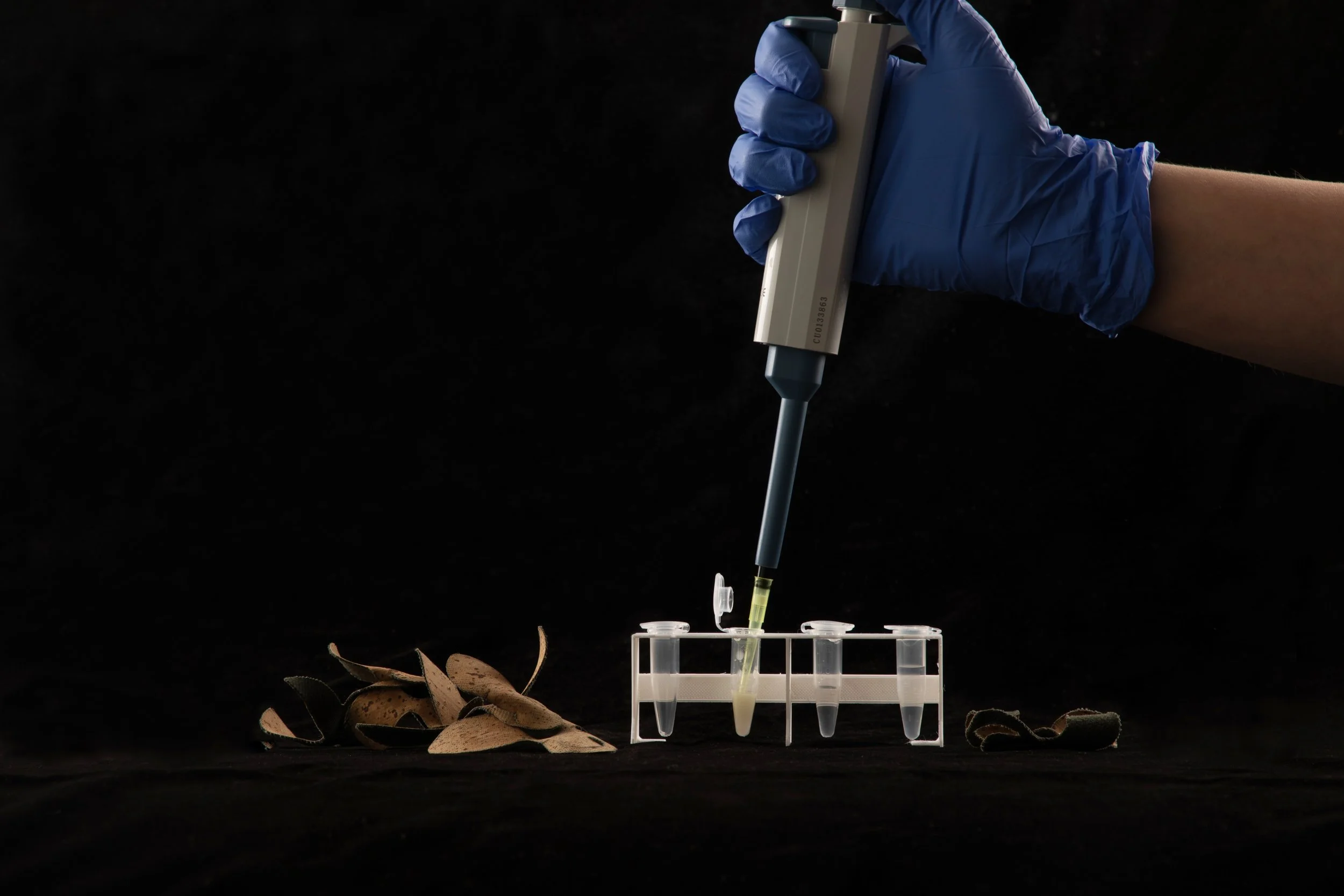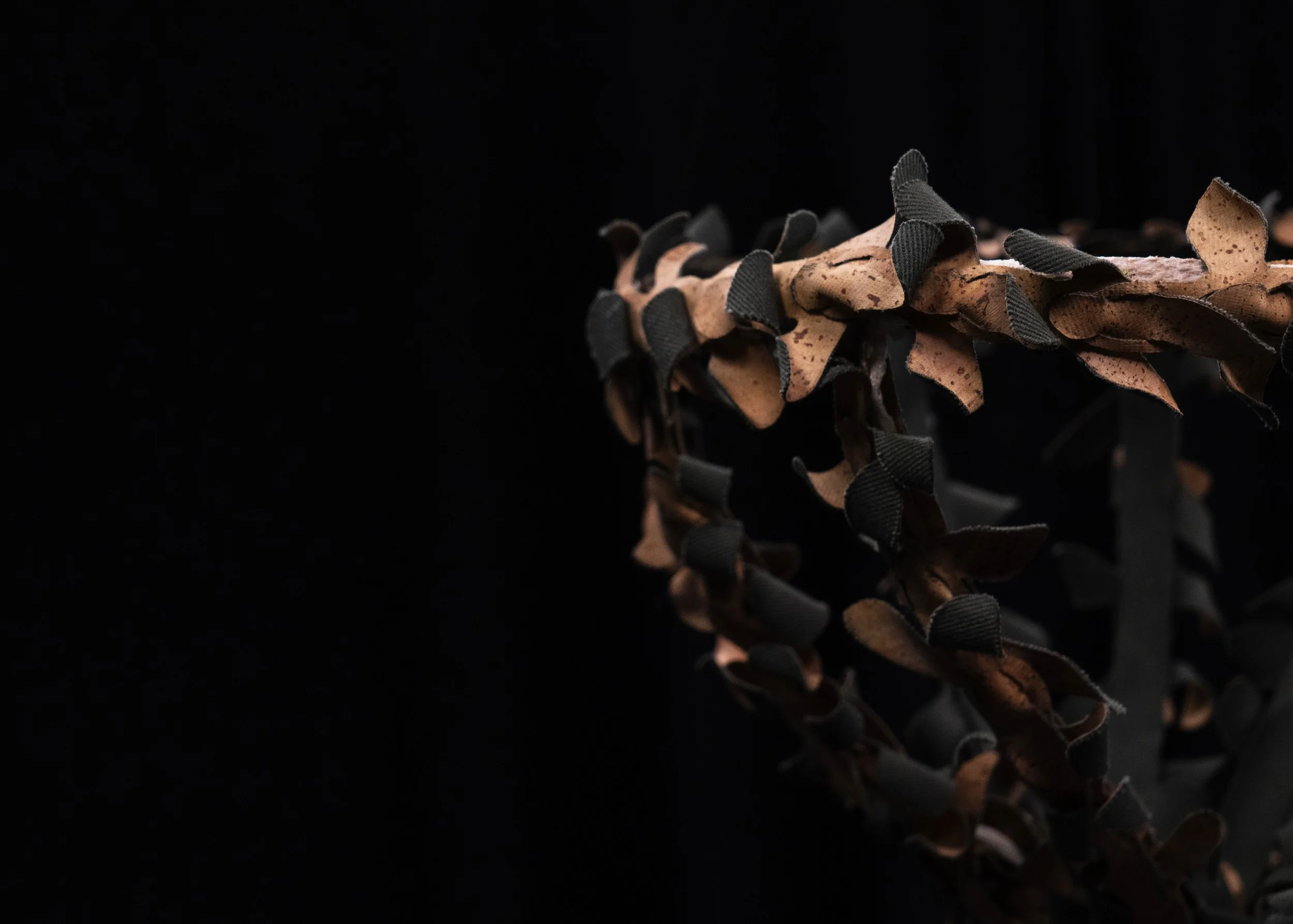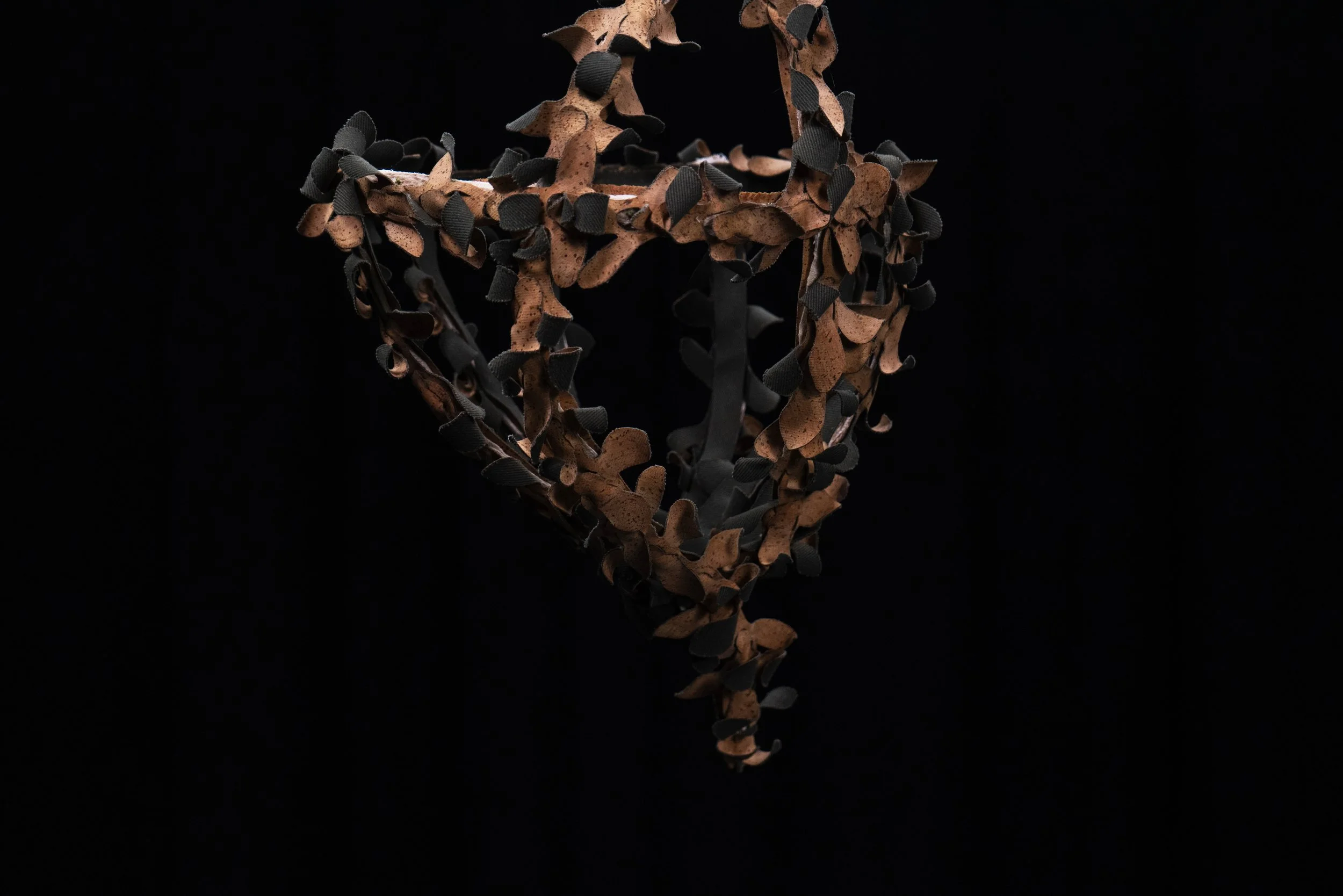Payonke:
Adaptive Mobiles
Challenging conventional notions of materials, craft,
and cohabitation with microbes.
2025
What if the objects in our homes could sense, shift, and adapt like living things?
Payonke explores this possibility through active, hygromorphic materials that contain Bacillus subtilis spores, probiotic bacteria that respond to moisture by changing shape, much like pinecones opening in the rain.
Rooted in the tradition of pająki ludowe - Polish folk mobiles, traditionally symbolic in their movement and once believed to bring prosperity into the home, this project reinterprets the craft using living materials to create responsive, interlocking forms. These structures function as natural indicators of indoor humidity, encouraging us to rethink our living spaces as adaptive, health-conscious ecosystems.
Payonke proposes a new design language in which materials possess their own agency, and inert objects transform into dynamic systems that shape-shift alongside us, turning our homes into spaces of ongoing visual interaction between human and microbial life.
B. Subtilis spores observed under the microscope. Grow Lab CSM, Jan 2025
agential
microbial
objects
Curl - low humidity
Flat surface - moisture indication
Movement
shape-shift observation
spores application
curl observation
no spores vs spores comparison
Agential Microbial Material:
Cork embedded with bacterial spores that sense and respond to environmental moisture, enabling non-electronic, dynamic material transformation
Designing “tools”
Humidity chamber for equalibration of the hygromorphic materials
The project incorporates hygromorphic, bioadaptive materials that respond to humidity and environmental changes. Bacillus subtilis, known for its probiotic properties and adaptive responses to moisture, becomes an active element in the designs, expanding the boundaries of traditional craft into dynamic, living systems. These spores can absorb moisture in humid conditions and release it when relative humidity (RH) decreases, acting as a natural sensor and stabiliser.



















